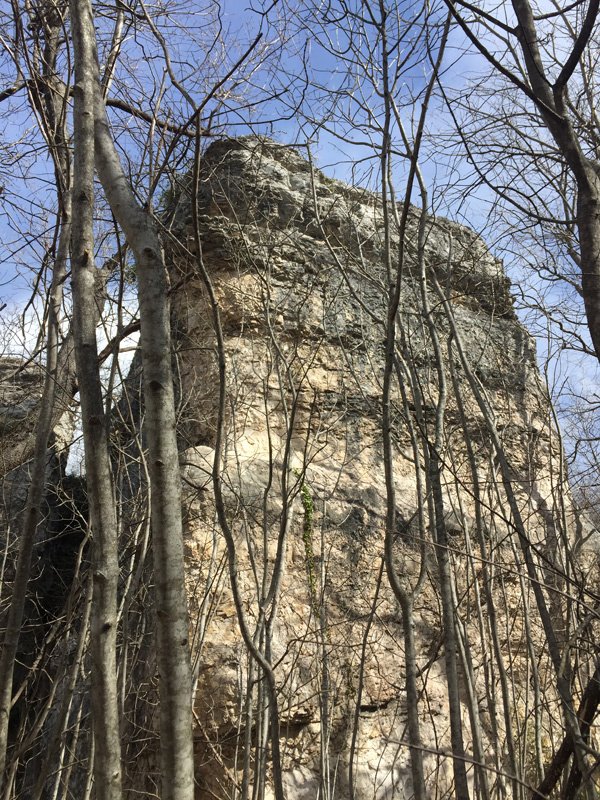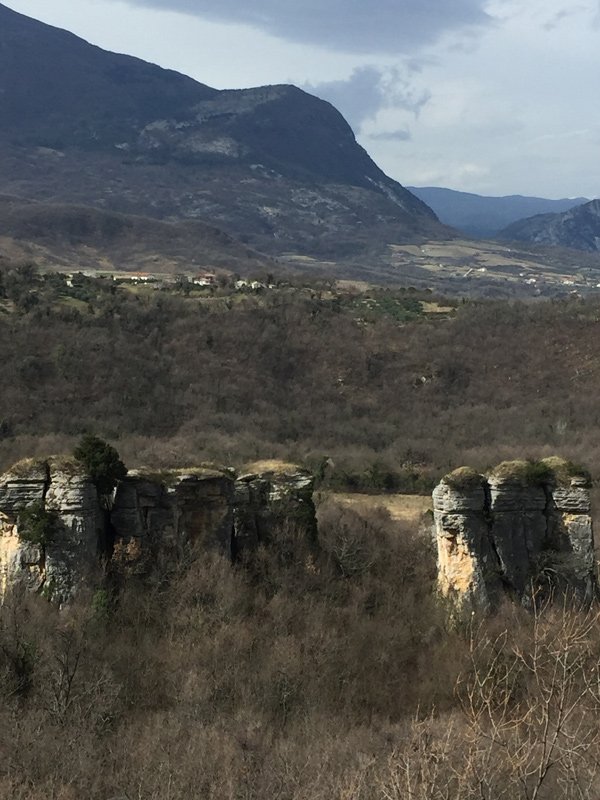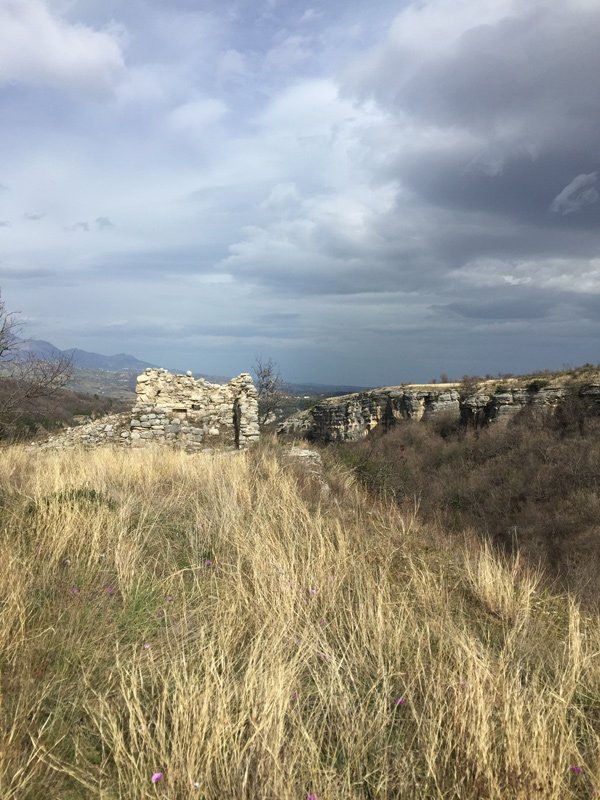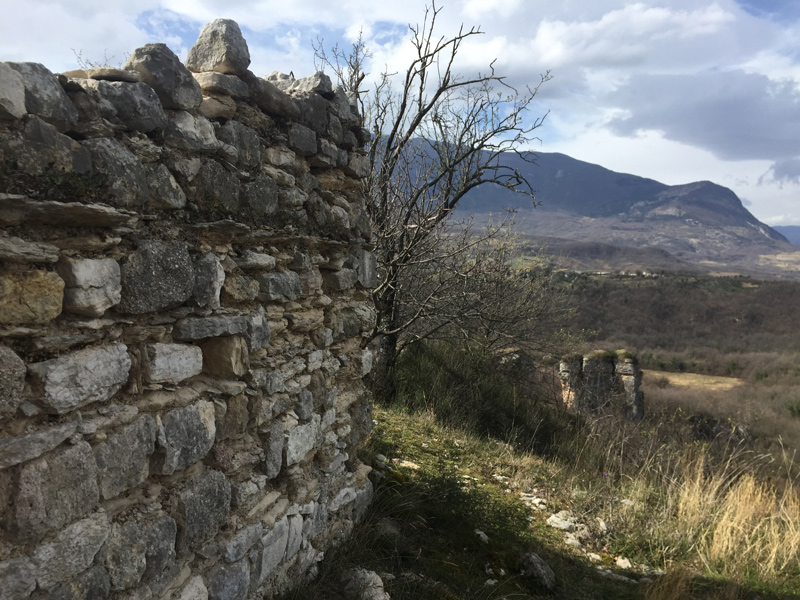This was one of those surprises that Abruzzo is generous with. While walking near a small hamlet of San Tommaso in the La Majella National Park, I looked up and saw ruins of a castle atop a tall rock tower. Piano dei Luchi, where the ruins are, is a fascinating place virtually unknown to foreign visitors to Abruzzo despite its natural beauty and rich history. It certainly deserves to be on your list of things to see in Abruzzo.

Flanked by high canyon walls that the Orta River chiselled in prehistoric times, Piano dei Luchi is a large flat area studded with tall rock formations. These natural towers reach up to 30 metres and are inaccessible as the rocks are steep and crumbly, so even the bravest climber wouldn’t dare to ascend them.

There is a well-beaten path running from the hamlet of San Tommaso to the village Musellaro but the area is always quiet, except on summer weekends when locals and people in the know come for a swim in the river. But just like many other quiet forgotten places in Abruzzo, this area is hiding a glorious past.

Humans settled here a long time ago. Archaeologists have found rock carvings on the canyon walls dating back to the Bronze Age. In pagan times, it was a sacred forest. Ancient Romans built settlements and roads in the area and you can still see the remains of two Roman bridges along the river, a short walk from the valley. Apparently, Julius Caesar marched here from the Rubicon to the battle in the ancient Corfinium in 49BC. There is still a saying among old people in the nearby village of Musellaro “If Musellaro had a seaport, Rome would fall,” meaning that this area was so important and had so much power that it could almost overthrow Rome’s rule.

The settlement in Piano dei Luchi was called Lucus, or Luco (meaning “a sacred forest”). It was dominated by a fortified castle, Castello di Luco, built in 1006 atop a 30-metre-high natural rock formation. Luco is mentioned many times in important documents between the 11th and 14th century and historians believe that the castle served as a military outpost on a busy road that connected this area to the San Clemente Abbey, Corfinium, the Tiburtina-Valeria road and the Tratturo Magno (the 244km-path that shepherds used to bring sheep from L’Aquila to Foggia for seasonal migration).

Today, not much remains from the castle: only two walls and a few stacked up stone fragments running around the rock formation but the views from up there are breathtaking.

Over the centuries, this corner of Abruzzo succumbed to feuds, earthquakes and emigration. The reminders of its past glory have crumbled and been swallowed by nature. I walked there so many times without noticing the castle as it is hidden behind the trees but, as it turned out, some kind soul put it on Google maps (see at the end of the article)!

Up until 50 years ago, this plain was cultivated and you can still see abandoned olive groves and stonewalls marking the fields. Walking around, you’ll also spot a few rock cavities turned into enclosures for sheep and goats.
If you do go to explore Piano dei Luchi and the castle, make sure you stay quiet. The silence there is special and, if you are patient, it will reward you with a sighting of deer, wild boar, or, perhaps, even a wolf. When I was there last time, five magnificent red deer stopped not far from me to graze.
Travelling to Abruzzo? Email me to inquire about my travel planning services.
For more information about history of the area see: Pianodorta.it, Il Ponte Romano, Musellaro.


